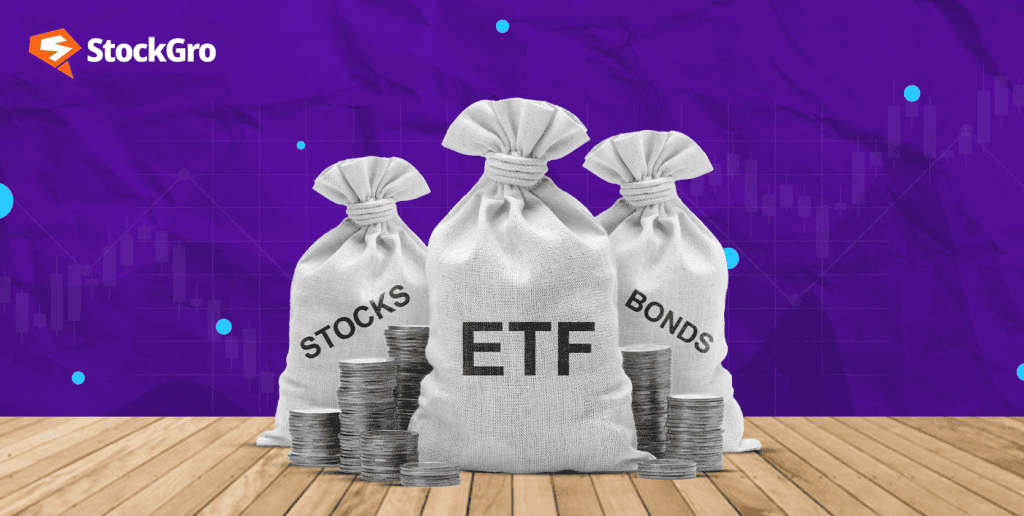
Building a profitable investing portfolio depends on knowing the differences between stocks and bonds. Both stocks and bonds are essential tools in financial planning and are among the most frequently used investment options.
As of 2024, the BSE stock market is worth ₹477.93 trillion, and the Indian corporate bond market is over ₹8.38 trillion. This highlights the incredible scope and relevance of both asset classes.
While bonds are essentially loans made to businesses or governments, stocks show ownership in a company. Each presents different advantages and risks. The basic difference between stocks and bonds will be broken out in this article, thus guiding your decisions of which is better stocks or bonds according to your specific financial objectives.
What are stocks?
Stocks—also called shares or equities—show ownership in a company. Purchasing a share of stock entitles you to specific advantages since you essentially become a partial owner of the company.
Purchasing a stock gives one ownership of a fraction of a company. Companies invite investors to become part owners by selling shares and raising money. While this ownership lets investors profit from the company’s performance, it does not give control over daily activities.
Types of stocks:
- Common stock: Provides members the opportunity to get dividends and the ability to vote at meetings. Common stockholders are the last ones to get their money back should a company file for bankruptcy.
- Preferred stock: Offers fixed dividends and priority over ordinary investors in bankruptcy but usually provides no voting rights.
Dividends (profit sharing) and capital appreciation—that is, change in stock value—generate returns. The market volatility of stocks is evident. Should the business fail or show poor performance, one runs the danger of losing money.
One of the fundamental methods to vary an investment portfolio is through stocks. Different sectors of the economy flourish at different times, thus investors purchase different stocks in both big and small companies in a wide range of sectors to help reduce risk.
What are bonds?
Bonds are loans you provide an issuer—a government or a corporation—in return for consistent interest payments and principal amount return at maturity.
Since they are considered as less risky than stocks, cautious investors seeking assured returns might consider them ideal. Bonds can be created by governments and businesses among other entities to fund projects, refinance debt, or participate in welfare activities.
Also read: Exploring the bond market for beginners
Key terminologies:
- Coupon: The interest paid on a designated schedule to bondholders.
- Face value: The bond’s issue price, which is normally ₹1000 in India.
- Market value: The price the bond is sold for on the market, affected by the economic situation and the issuer’s company
- Maturity date: The date when the initial amount is reimbursed, thus ceasing interest payments.
- Yield to maturity: The general return of the bond expressed as a percentage.
Types of bonds:
- Government securities: Issued by federal and state governments with choices ranging from long-term—more than one year—from short-term—less than one year.
- Corporate bonds: Issued by businesses or corporations.
- Inflation-indexed bonds: These bonds adjust the interest rates depending on inflation.
- Zero-coupon bonds: Sold at a discount, these bonds pay a lump sum at maturity.
- Sovereign gold bonds: issued by the Reserve Bank of India with an eight-year maturity period and a fixed interest rate of 2.5%.
You may also like: SGBs: A smarter way to invest in gold
Key differences between stocks and bonds
Knowing the fundamentals of what are stocks and bonds, let’s now examine and grasp the stocks vs bonds difference:
| Stocks | Bonds | |
| Definition | Purchased in exchange for money, stocks show ownership interests in a company. | Bonds are tools for investing that follow the index of performance of a benchmark market. |
| Relationship | Shareholders are recognized as owners of the business. | Bondholders act as creditors to the company. |
| Return structure | Shareholders may receive dividends, though these payments are not guaranteed. | Investors earn a predetermined interest payment from their bonds. |
| Rights and privileges | Stockholders are entitled to vote on key company decisions. | Bondholders have priority in receiving repayments during the liquidation process. |
| Risk assessment | Stocks carry a higher risk due to the potential for variable returns. | Bonds generally receive ratings from credit agencies and offer fixed returns, making them a safer choice. |
| Market participants | The stock market consists of market makers, traders, and brokers. | Major players include individual and institutional investors, along with market speculators. |
When to invest in stocks?
Given their more volatility than bonds, stocks are ideal for those with greater risk tolerance. For those looking for capital growth, though, stocks are a good choice since this risk usually comes with the possibility of better returns.
Long-term investments, including retirement savings or wealth-building objectives, call especially for stocks. Usually smoothed out over long times, the swings in the stock market help to provide better returns than those of short-term investments.
Investing in stocks is most advantageous in a bullish market, in which case economic data point to development or when investor mood is strong.
Furthermore, stocks can be more suitable if your goal is for wealth appreciation instead of consistent income since their value usually rises with time, so benefiting patient investors. The best candidates for stock investments are growth-oriented investors able to withstand changes in the market.
Example – For his retirement—which is still thirty years away— Rohit, a thirty-year-old with a high-risk tolerance, chooses to make stock investments. Seeing a phase of a bullish market marked by high economic development and a favourable investor attitude, he puts his savings into a diversified portfolio of stocks in technology and renewable energy sources.
By allowing him to ride out market volatility, this long-term strategy helps him to eventually show notable capital appreciation by retirement.
When to invest in bonds?
For conservative investors who value capital preservation and would rather have consistent, dependable returns over great risk and maybe higher rewards, bonds are perfect. Bonds appeal to risk-averse investors because of their lower volatility and consistent income stream—regular interest payments.
Bonds are a good option if your goal is a consistent income stream, especially for immediate financial needs or in retirement. Bonds also give portfolios mostly weighted in stock stability since they usually perform well in times of economic uncertainty.
In bear markets or during times of economic uncertainty when stock prices are declining, and investors search for a safer place for their money, bonds are especially appealing. Bonds’ lower volatility and fixed income can help offset stock market declines and balanced portfolios.
Example – Anita, a 60-year-old retiree, for instance, is seeking a consistent income to cover her way of life. Knowing the value of capital preservation, she made the investment in government bonds with consistent interest rates.
Anita’s bond investments give her a consistent source of income while also adding stability to her whole portfolio, thus ensuring her financial security during her retirement years.
Must read: Stock Market Volatility: The Roller-Coaster Ride – StockGro Blogs
Bottomline
Understanding the variations between stocks and bonds will help one to build a well-rounded investment portfolio.
Stocks come with more risks and volatility even if they give the possibility for great returns and company ownership. Bonds, on the other hand, give more consistent returns, which qualifies for conservative investors or those almost retired.
Combining asset classes helps investors achieve diversification, thus balancing growth and stability to reach their financial objectives.
FAQs
Are bonds safer than stocks?
Yes, bonds are usually regarded as being safer than stocks. More consistent returns come from bonds since they pay fixed interest and return the principal at maturity. Compared to stocks, which can swing greatly in value, they are less volatile and have less risk. Bonds do, however, carry credit, inflation, and interest rate concerns; they are not risk-free. Investing differently can help to balance returns with safety.
Do bonds pay dividends?
No, bonds have no dividend paybacks. Rather, they give bondholders regular interval interest payments—also known as coupons. These interest payments are set and fixed unlike dividends, which might vary and come from the profits of a company. Bonds offer a constant income stream and differ from dividend-paying stocks in that at maturity they return the principal amount to the investor.
Can I sell a bond before maturity?
You certainly can sell a bond before it matures. However, depending on market conditions and present interest rates, the selling price might differ from its face value. Should interest rates have increased since you purchased the bond, you might have to discount it. On the other hand, should rates drop, you might sell it for more. Also, pay attention to possible transaction costs.
How do I choose between stocks and bonds?
Which stocks or bonds best fit you will depend on your investment horizon, risk tolerance, and financial goals. Though they come with more volatility and risk, stocks provide better possible returns. Less risk and more consistent, predictable returns come from bonds. While those approaching retirement might choose bonds for stability, younger investors may want stocks for growth. Combining both can help to balance reward and risk.
What is blue chips stock?
A blue-chip stock represents a stake in a big, reputable, financially sound company with a track record of consistent performance and dividend payments. Usually leading in their fields, these businesses have a great reputation. Blue chip stocks’ stability and capacity to weather economic downturns make them regarded as safe investments.

